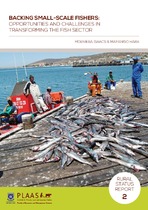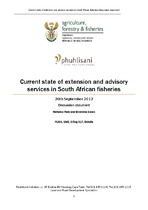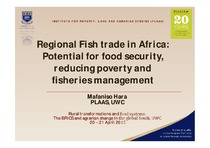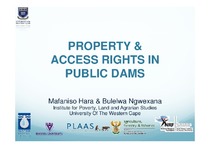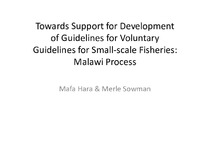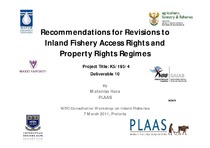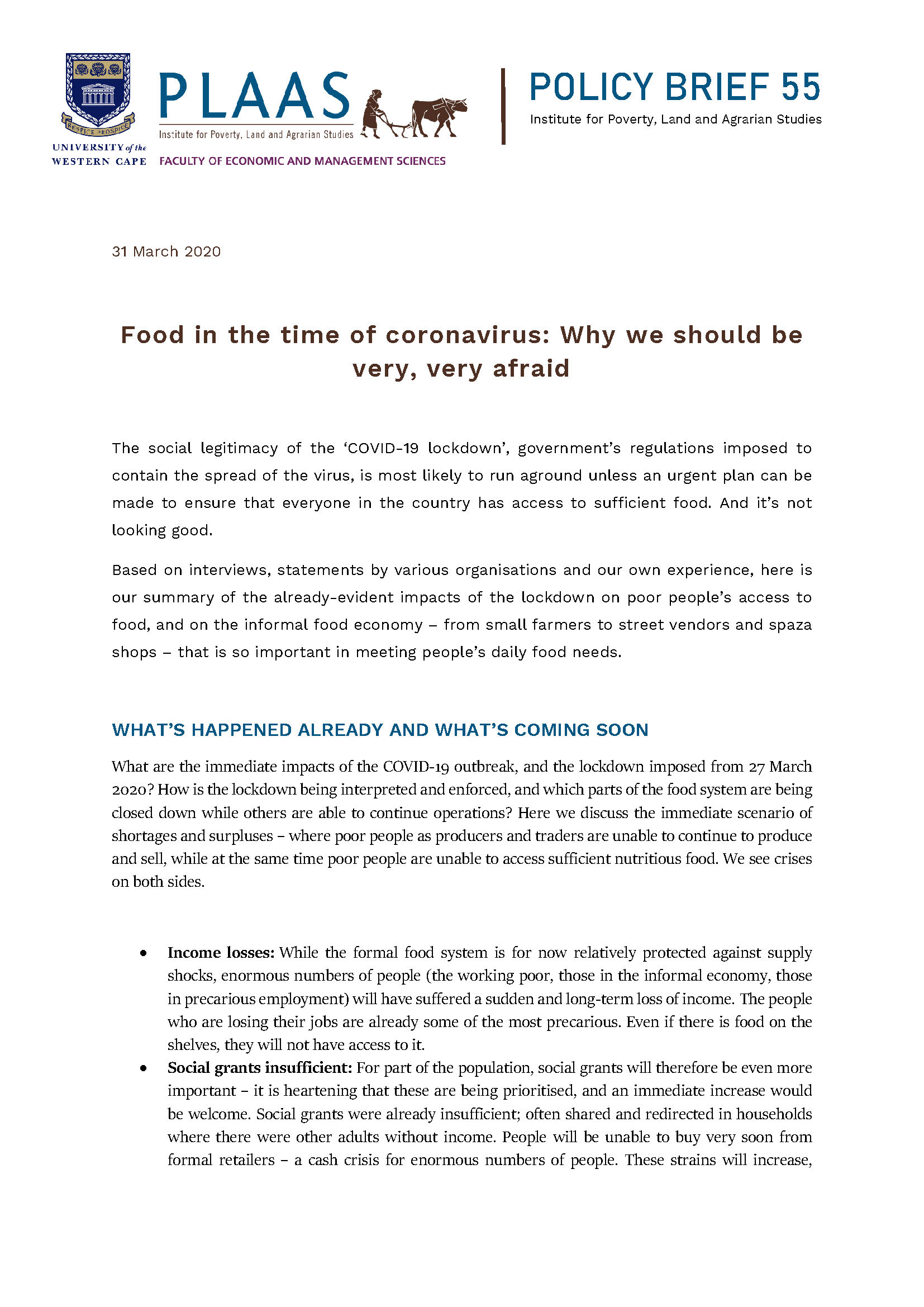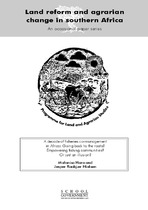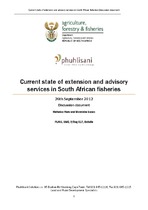Search
Now showing items 1-10 of 34
Backing small-scale fishers: Opportunities and challenges in transforming the fish sector
(Institute for Poverty Land and Agrarian Studies (PLAAS), 2015)
Globally, small-scale fisheries play a significant role in food security, poverty reduction and income generation (Béné et al 2007; Heck et al 2007; Béné et al 2010; FAO 2003). At the 2008 Global Conference on Small-Scale ...
Current state of extension and advisory services in South African fisheries
(Institute for Poverty Land and Agrarian Studies (PLAAS), 2012)
The fishing industry can be divided into marine, recreational, aquaculture and inland sub-sectors. The marine sub-sector is the main commercial fishing sector comprised of industrial fishing and also small-scale fishing, ...
Regional fish trade in Africa: Potential for food security, reducing poverty and fisheries management
(2015)
Sub-Saharan Africa: context
• One of the regions in the world suffering from high rates of hunger and poverty.
• 26% of the world’s hungry people were located in sub-Saharan Africa in 2010 (FAO and WFP,2010)
• Chronic ...
Property and accessing rights in public dams
(2017)
South Africa has great potential for development and enhancement of inland fisheries through use of storage dams and lakes
This potential remains largely under/unutilised Inland fisheries could promote rural livelihoods ...
Towards support for development of guidelines for voluntary guidelines for small-scale fisheries: Malawi process
(2015)
• Malawi used as case to support development of the guidelines
• One of a number of cases worldwide
Recommendations for revisions to inland fishery access rights and property rights regimes
(2011)
• Deliverable Aims:
• Evaluate and analyse existing property rights and access rights currently governing inland fisheries in South Africa
• Recommend reforms or changes to the existing property rights regimes and access ...
Efficacy of rights based management within an ecosystems approach to fisheries - Small pelagics in South Africa
(2013)
• South Africa issued long-term fishing rights (2006 to 2020) for most commercial species Long-term rights a form of Rights Based Management (RBM) approach
• Has committed itself to introduce an Ecosystems Approach to ...
Policy Brief 55: Food in the time of coronavirus: Why we should be very, very afraid
(Institute for Poverty, Land and Agrarian Studies, 2020-04-01)
The social legitimacy of the ‘COVID-19 lockdown’, government’s regulations imposed to contain the spread of the virus, is most likely to run aground unless an urgent plan can be made to ensure that everyone in the country ...
A decade of fisheries co-management in Africa: Going back to the roots? Empowering fishing communities? Or just an illusion?
(Institute for Poverty Land and Agrarian Studies (PLAAS), 2002)
This paper provides an overview of co-management in Africa and the historical, political and paradigmatic reasons for the shift. The historical context is important when analysing the performance of the regime. The main ...
Current state of extension and advisory services in South African fisheries
(Institute for Poverty, Land and Agrarian Studies, University of the Western Cape, 2012)
The fishing industry can be divided into marine, recreational, aquaculture and inland sub-sectors. The
marine sub-sector is the main commercial fishing sector comprised of industrial fishing and also smallscale
fishing, ...

